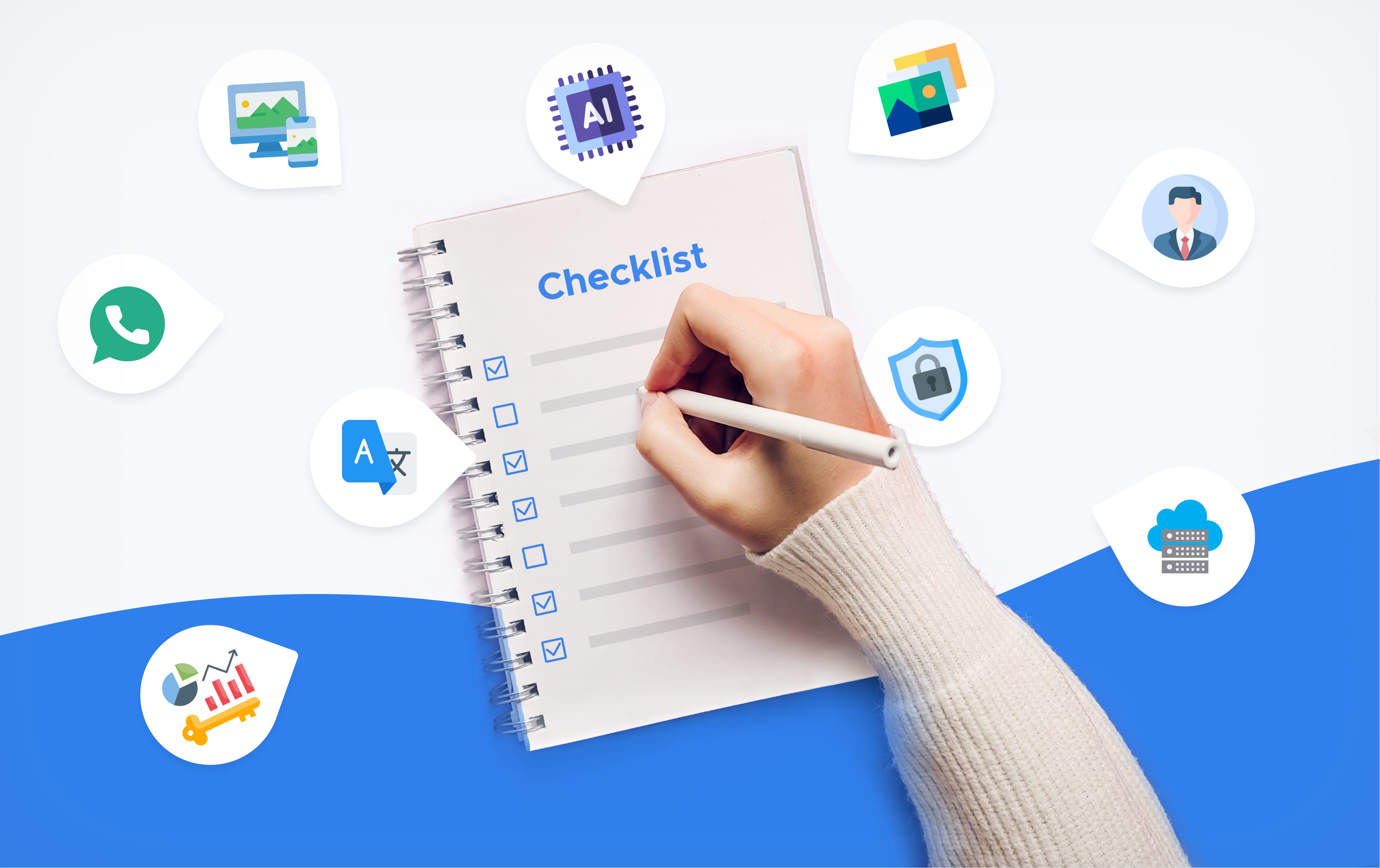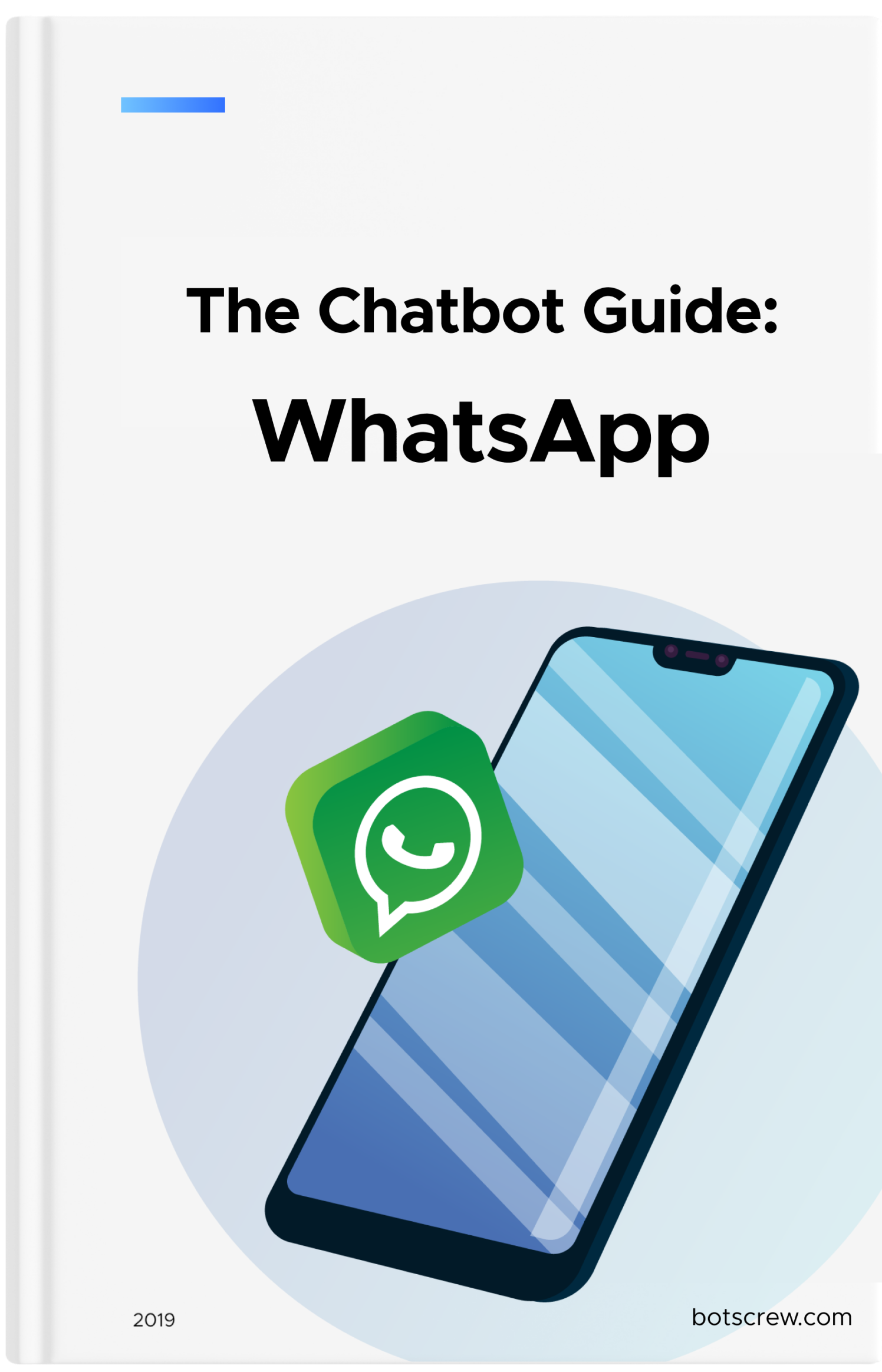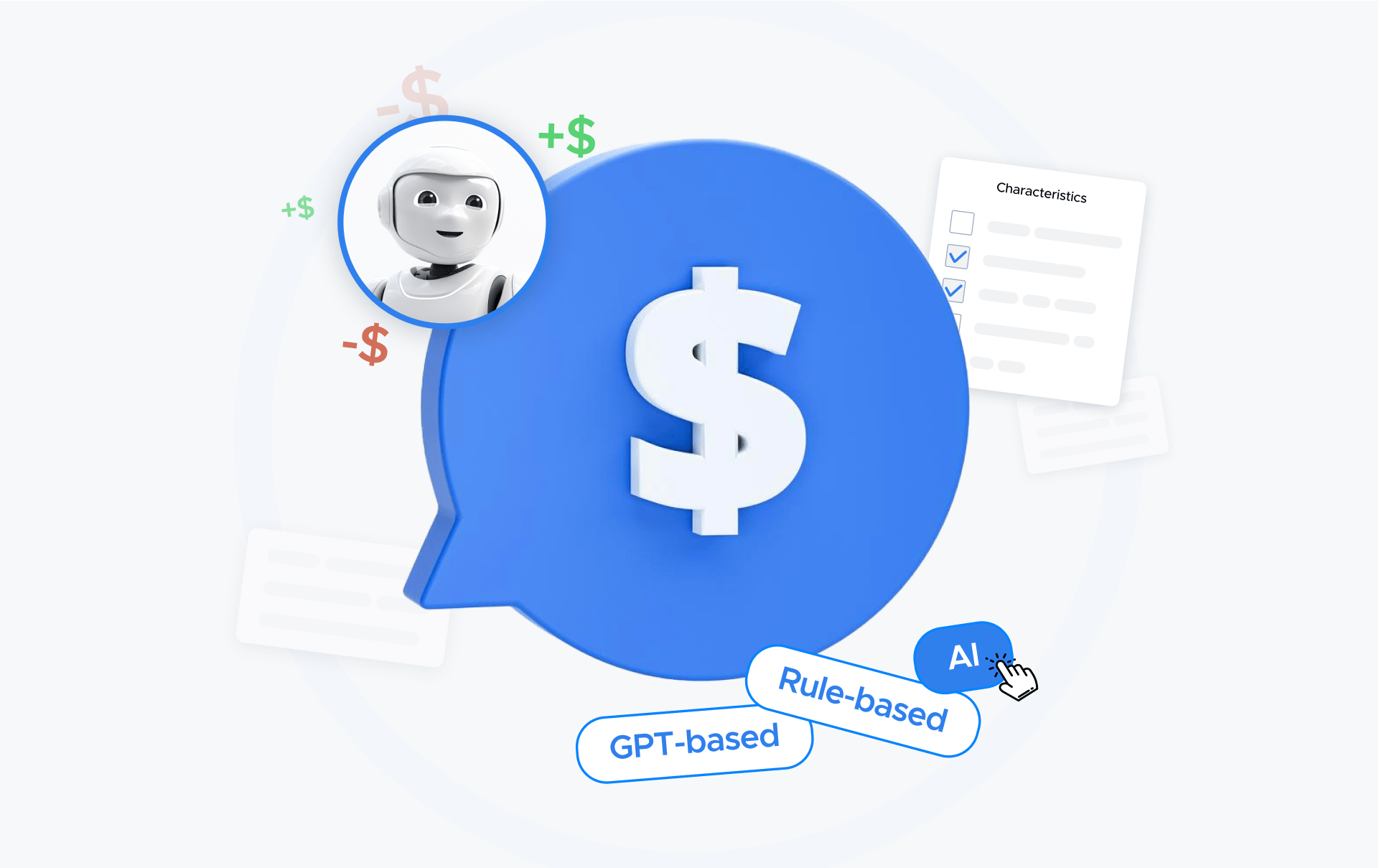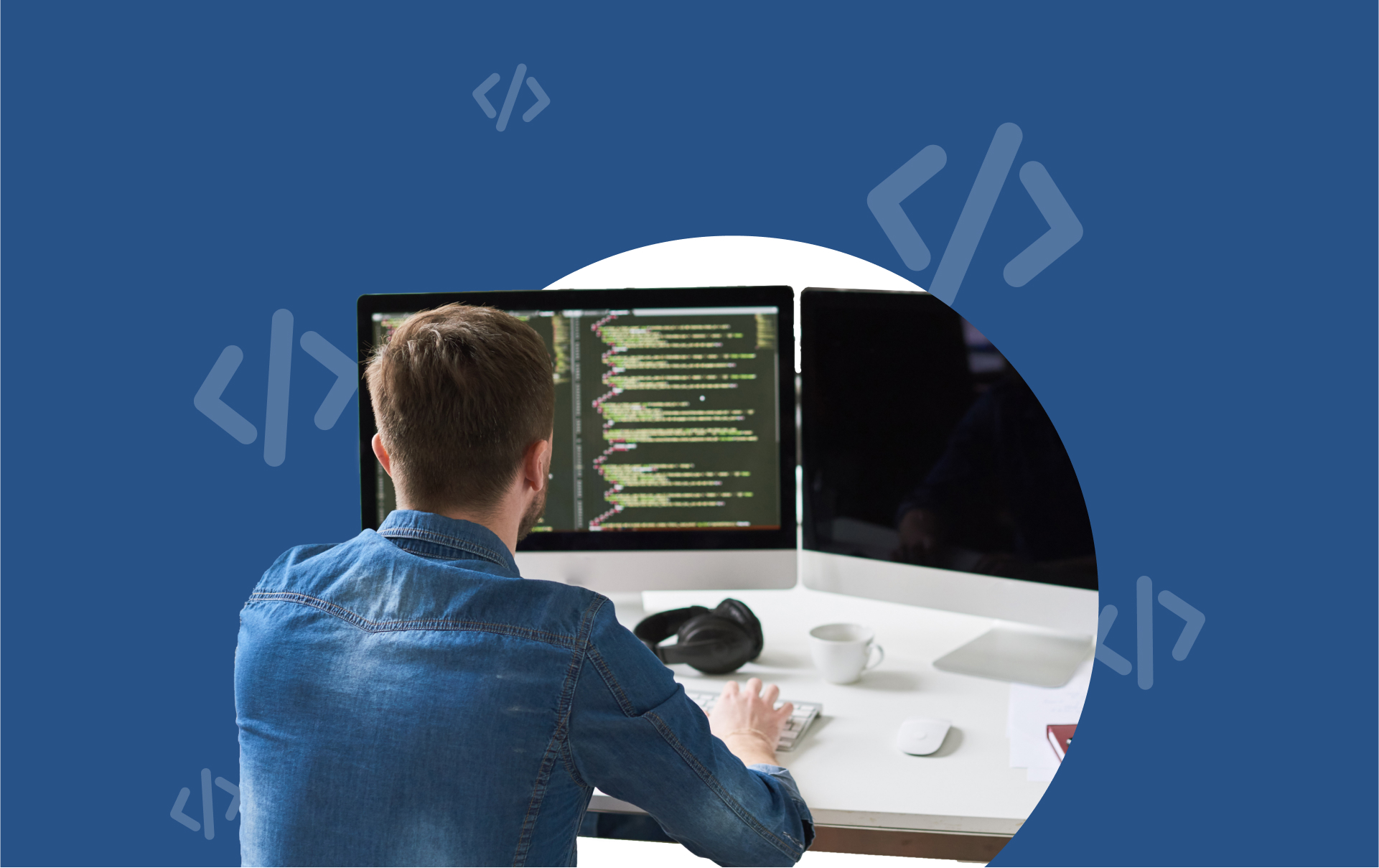Chatbot Requirements: Technical & Non-Technical Considerations
In this article, we discuss how to properly create chatbot requirements, which things to consider before starting the development, and what elements are absolutely essential to create an amazing chatbot.

If you want a great chatbot, you must create the proper requirements. Well-structured chatbot requirements lay the right foundation for your future chatbot development, so be sure to complete this step.
Many companies are so eager to start building their chatbots that they entirely ignore the discovery phase and requirements-setting stage.
Here are the risks of skipping the proper chatbot requirements and discovery stage:
- According to Mckinsey's research on implementing software projects, an average large IT project overruns its budget by 45% while the benefits shortfall is 56% less than expected.
- The percentage of projects that fail is fairly high—a whopping 70% of all projects fail to deliver what was promised to customers. The implementation of a management process, however, is shown to reduce the failure rate to 20% or below.
- 39% of projects fail due to poor planning. Poor project planning can be disastrous, and the consequences are usually high costs and time overruns. (TeamGantt, Research Gate)
Create your requirements now:
But wait, what is a discovery phase?
The discovery phase, or scoping phase, is a process in which information about the future project is collected and analyzed. This helps clarify the project's goals, limitations, and overall scope. We at BotsCrew highly recommend starting your chatbot development project with a chatbot discovery phase. During this collaborative exercise, our teams finalize the chatbot vision, business goals, design, budget, and implementation approach and make the first prototype.
Where to start with the chatbot requirements?
For companies with no chatbot experience setting the proper chatbot requirements can be very tricky and complicated. Suppose you are not a big enterprise company with many resources, experience in chatbot development, or consultants. In that case, it's better to contact chatbot vendors or experts to help you with the requirements.
Note: if you have an in-house IT department or you know someone who had built a website once, but they don’t have chatbot experience, probably they won’t be able to create proper chatbot requirements. Knowing how to code doesn’t mean they know how to work with chatbots. It’s like having the flu and visiting a dermatologist instead of your physician. Because aren’t they both doctors?
When setting the requirements, you should always start with the business, not the technical aspect.
Start with:
- defining the main problem you want to solve with the chatbot,
- measuring the impact of the problem,
- determining the main chatbot goal/objective,
- understanding the market and target audience
- paying attention to the "internal audience" of the chatbot (the people or the team in your company who will be working with the chatbot).
Let’s dive a bit deeper into this for a second.
To adequately determine the problem, the goal, and the audiences, both external and internal, you need to understand the current situation in your company.
Imagine you want to implement a customer support chatbot. The first step we recommend is researching your customer service (CS) department. Start with analyzing all accessible data you have. Analyze current processes, contact channels, conversations, ratings, and metrics, and remember to talk to your customer service agents to figure out your most problematic areas. When analyzing, take note of things like low customer ratings and negative feedback, understand the KPIs your CS team is not hitting and why etc.
Then you need to highlight the main chatbot goal or objective.
Make sure to make your chatbot’s goal into a SMART goal.
So, let’s get back to our customer service chatbot.
Imagine you have found a problem when analyzing customer feedback. Most customers are saying the customer service response time is very long, and that's why they are giving you a low rating.
Your objective for the chatbot could sound like this: "Decrease waiting time to 1 minute by the end of Q3 2023" or "Improve customer service response time from 18 minutes to 1 minute in the next Q".
To learn how to design great chatbot goals, be sure to read our article on this topic
Having done this part, you can move to the next step, drafting the technical chatbot requirements.
Technical chatbot requirements
When working on the tech requirements think about the next things:
- Channels. Which channels do you want your chatbot to be on? Website, WhatsApp, Facebook, SMS, Instagram, email, etc.
- Languages. Which languages do you want your chatbot to “speak”? English, French, German, Arabian, etc? Should it speak one language or multiple?
- Integrations. Which tools do you need the chatbot to be integrated with? CRM, payment system, calendars, maps, custom internal tool, etc.
- Chatbot's look and tone of voice. If you have a specific vision of the chatbot, be sure to include this in the requirements. Also, if you have a very prominent brand personality and tone of voice, include that in your requirements as well.
- KPIs and metrics. Be sure to specify if you have any specific metrics and KPIs you have that you want the chatbot to meet.
- Analytics and Dashboards. Do you want the analytics to be in real-time? Are there any specific data you want to have on your dashboard like the number of users, automation rate, etc?
- Technologies. Do you have any specific technologies you want the chatbot to be built with?
- NLP and AI. Do you want the chatbot to have decision tree logic, Machine Learning (ML), Natural Language Processing (NLP), or Artificial intelligence (AI)?
- Accessibility. Do you need to meet some specific accessibility requirements like WCAG or ADA?
- Users. How many people from your team are going to use the chatbot? How many of your customers or conversations do you expect to use the chatbot?
- Rich media. Should the chatbot’s responses include text, hyperlinks, images, gifs, video, and PDF attachments?
- Security. Do you have any specific security measures and requirements you want the vendor or the chatbot to meet?
- Hosting. Where the chatbot and the user data will be hosted: on your own servers or on the cloud? If on the cloud, what will be the cloud service provider and server's location?
When working on the technical requirements, use real data. Don’t build your requirements around things you or someone considers to be nice to have. Build the requirements based on the actual data you have. For example, if you know that your clients are 50+ years old, US residents that contact you mainly via email or website, there is no need to create a Telegram chatbot because it’s a “nice to have” thing.
Note: What if I am a startup, or recently started the company and I don’t have the customer service historical data? Well, then it makes even more sense to start with Discovery. Experienced chatbot professionals usually have rich expertise in different use cases and industries. Based on this experience they will help you determine the probable questions, problems, and issues your chatbot could tackle.
Here’s a real example from one of our clients:
“We weren’t in the market yet but wanted to build a chatbot that’s able to answer support questions. We had to anticipate what kind of support questions we’d be facing once we entered the market.
First, they did a discovery phase with us to figure out what could be the topics."
Chatbot vendor requirements
Also, there are vendor or platform requirements you should consider:
- Chatbot vendor’s location. If it’s important for you to work with the company from your country due to some legal, financial, etc reasons, be sure to include this in your vendor requirements
- Their expertise. Have they worked with your industry, companies like yours, etc? Can they provide any relevant case studies to prove the results? For example, if you're about to integrate ChatGPT for enterprise, do they own the required knowledge to customize and secure the solution?
- Their development process. Do you want them to start with the discovery phase? Do you want them to provide the dedicated Project Manager (PM), Business Analyst (BA), Account Management (AM), etc? Do you want the company to work using Agile and Scrum methodologies? If you have any project development and management requirements, be sure to include those.
- Certification and compliances. If you have any specific compliances like HIPAA or GDPR, or other policies you want the vendor or the chatbot to comply with, include that as well.
- Code ownership. Who will own the code?
- Payment. Will the project be fixed-priced or flexible pricing with per-hour rates? Are there any hidden/additional costs that you need to know about? Do you pay upfront, 50/50, or after the project is delivered? If you want to know more about chatbot pricing, check out this article: Chatbot Pricing: How to Calculate the Chatbot Price
- After-launch support. What will happen with the chatbot after launch? Do you need to hire a team to support the chatbot? Will they provide after-launch support, training, and chatbot improvements?
- Feedback and references. What is the feedback from their previous customers? Can they provide any references you can contact to discuss their experience with this vendor?
- Awards, recognition, or media mentions. Are there any awards or recognitions they have achieved and can share with you? Where there any media mention of this company or its projects?
If you want more information on how to choose a chatbot vendor, check out this article: Top 10 Chatbot Development Companies in 2023
So, in conclusion, setting chatbot requirements is a very individual thing. There is no fit for all templates for chatbot requirements. So, we recommend contacting someone with rich chatbot development experience to help you create requirements. We at BotsCrew can consult and help you create your chatbot requirements for free. So if you are stuck with the requirements, don’t hesitate to contact us. Let’s build better bots together!
If you’re more into action – here’s how we can help with chatbot requirements:
✅ Help gather all requirements
After releasing over 100 chatbot projects in 7 years, we'll help you ensure that you keep each aspect on the development list. As a result– no unexpected costs at development later.
✅ Consult on the big picture: pricing, scaling, development approach
In addition to gathering chatbot requirements, we provide comprehensive consulting services to help your company leverage AI technologies effectively. Our experts will guide you through the process of integrating AI solutions into your business model, identifying areas of improvement, and capitalizing on AI-driven opportunities for growth.
Contact us today to schedule a consultation and take your chatbot projectinto action.









